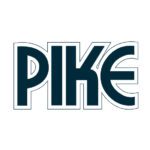
Website Pike Corporation
A Lineman – Overhead (Duke) job
Position Overview: The Class A Lineman is a skilled position in the construction, maintenance and repair of electrical overhead distribution systems. This position works at various locations and may also be required to travel to another state depending on customer demands.
Essential Functions:
- Works safely while performing new construction, maintenance or repair work of energized and de-energized overhead work.
- Capable of leading crew members in the absence of the Foreman.
- Strings overhead wire.
- Set poles and anchors.
- Installs transformers, lightening arrestors, cutouts, crossarms, insulators, switches and switchgear.
- Troubleshoots trouble in primary and secondary systems.
- Replaces cutout fuses and clears faulted circuits and systems.
- Frequently works with energized high voltage systems requiring skill and care to protect the lives of themselves and others.
- Maintains company vehicles, equipment and tools in good working order.Able to perform rigorous physical labor.
- Must be able to identify primary and secondary voltage on a circuit.
- Must be familiar with induced voltage.
- Understands grounding procedures.
- Capable of working at heights and/or confined spaces.
- Capable of properly installing and removing PPE and cover up.
- Must be able to climb different types of structures (wood, steel, etc.) and possess the necessary tools to do so.
- Must understand how to phase out a line using phasing sticks.
- Capable of planning safe work based on a job print or work order.
- Understands how to obtain a one shot on a recloser.
- Must be able to effectively conduct a pre-job or tailgate briefing.
- Must be able to safely perform a reconductoring job.
- Willingness to glove/work live high voltage distribution power lines.
- Capable of safely installing and removing mechanical jumpers.
- Understands how to use a load bust tool.
- Does all other related work as required to complete the job.
- Must be able to work outside, frequently in inclement weather.
TASKS
- Adhere to safety practices and procedures, such as checking equipment regularly and erecting barriers around work areas.
- Test conductors, according to electrical diagrams and specifications, to identify corresponding conductors and to prevent incorrect connections.
- Open switches or attach grounding devices to remove electrical hazards from disturbed or fallen lines or to facilitate repairs.
- Climb poles or use truck-mounted buckets to access equipment.
- Drive vehicles equipped with tools and materials to job sites.
- Identify defective sectionalizing devices, circuit breakers, fuses, voltage regulators, transformers, switches, relays, or wiring, using wiring diagrams and electrical-testing instruments.
- Install, maintain, and repair electrical distribution and transmission systems, including conduits, cables, wires, and related equipment, such as transformers, circuit breakers, and switches.
- Dig holes, using augers, and set poles, using cranes and power equipment.
- Place insulating or fireproofing materials over conductors and joints.
- Install watt-hour meters and connect service drops between power lines and consumers’ facilities.
- Travel in trucks, helicopters, and airplanes to inspect lines for freedom from obstruction and adequacy of insulation.
- Splice or solder cables together or to overhead transmission lines, customer service lines, or street light lines, using hand tools, epoxies, or specialized equipment.
- String wire conductors and cables between poles, towers, trenches, pylons, and buildings, setting lines in place and using winches to adjust tension.
- Inspect and test power lines and auxiliary equipment to locate and identify problems, using reading and testing instruments.
- Attach cross-arms, insulators, and auxiliary equipment to poles prior to installing them.
- Coordinate work assignment preparation and completion with other workers.
- Replace or straighten damaged poles.
- Trim trees that could be hazardous to the functioning of cables or wires.
- Lay underground cable directly in trenches, or string it through conduit running through the trenches.
- Clean, tin, and splice corresponding conductors by twisting ends together or by joining ends with metal clamps and soldering connections.
- Pull up cable by hand from large reels mounted on trucks.
- Cut and peel lead sheathing and insulation from defective or newly installed cables and conduits prior to splicing.
- Cut trenches for laying underground cables, using trenchers and cable plows.
SKILLS
- Active Listening – Giving full attention to what other people are saying, taking time to understand the points being made, asking questions as appropriate, and not interrupting at inappropriate times.
- Speaking – Talking to others to convey information effectively.
- Critical Thinking – Using logic and reasoning to identify the strengths and weaknesses of alternative solutions, conclusions or approaches to problems.
- Monitoring – Monitoring/Assessing performance of yourself, other individuals, or organizations to make improvements or take corrective action.
- Coordination – Adjusting actions in relation to others’ actions.
- Complex Problem Solving – Identifying complex problems and reviewing related information to develop and evaluate options and implement solutions.
- Operation Monitoring – Watching gauges, dials, or other indicators to make sure a machine is working properly.
- Operation and Control – Controlling operations of equipment or systems.
- Troubleshooting – Determining causes of operating errors and deciding what to do about it.
- Repairing – Repairing machines or systems using the needed tools.
- Quality Control Analysis – Conducting tests and inspections of products, services, or processes to evaluate quality or performance.
- Judgment and Decision Making – Considering the relative costs and benefits of potential actions to choose the most appropriate one.
- Time Management – Managing one’s own time and the time of others.
KNOWLEDGE
- Customer and Personal Service – Knowledge of principles and processes for providing customer and personal services. This includes customer needs assessment, meeting quality standards for services, and evaluation of customer satisfaction.
- Mechanical – Knowledge of machines and tools, including their designs, uses, repair, and maintenance.
To apply for this job please visit lensa.com.